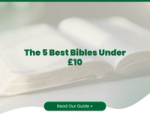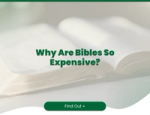Good Friday meditation: Christ have mercy
Edward Green
On Good Friday Edward Green shares some thoughts on the significance of the day

copyright quinn.anya (Creative Commons)
Last year in a first, Pope Benedict took questions about the Christian faith on Good Friday in an Italian television special. I cannot promise to answer all those questions on the Christian faith, or pretend to have all the answers. But I hope I can explain why we do what we do on Good Friday.
Rowan Williams explains: "You walk through the experience of Holy Week from Palm Sunday to Easter Sunday in a ritual way: picking up a bit of the gospels here, a bit of the prophets and the psalms there; performing certain ritual acts; watching through the night; participating in a very curious and distinctive liturgy for Good Friday, with the bare cross being brought in and unveiled. All of that is an attempt to say what a mere recitation of the story, or a mere photograph, couldn't say."
Today we gather at the cross as our journey through Holy Week draws closer towards its close.
John's Gospel is our guide. Last night we celebrated the last supper, Christ's body and blood. But John's telling of that story is seemingly left open as Jesus shares only bread, even with the one who would betray him.
It is at the Crucifixion as Christ breathes his last that John completes the communion. As Christ takes the wine, he declares it is 'finished' and gives up his Spirit. As his side is then pierced blood and water pour from his side at the time the Passover lambs were being sacrificed in John's chronology.
For those first Christian's who read John's gospel every celebration of communion, each sharing of Bread and Wine was a journey with Christ our Passover lamb through His passion.
In the 3rd century Bp. Eusebius spoke of "the sacred offerings of the table of Christ, through which we have been taught to offer the unbloody and reasonable sacrifices"
16th Century Anglicans followed in this early understanding. Lancelot Andrewes explained "His flesh is made bread for us in his passion, when he died, but is given and applied to us in the Supper."
This application and this journey are seen most clearly on Good Friday. Last night we gathered with the disciples for the last supper. Today we do not gather on our own. We join with the closest of Jesus' disciples in sorrow and shortly we shall have the opportunity to gather with them around the cross. We shall have time to pray. To touch, kiss or hold. To light a candle.
And then as John describes Christ's death as the completion of that holy meal, as blood and water flow from that stricken body we shall share Christ's body and his blood in bread and wine as He promised.
On this Good Friday we find ourselves most intimately connected with Christ's Sacrifice on the Cross. We offer ourselves to be transformed by the radical power of the crucifixion. To be comforted, healed and forgiven. To truly and deeply share in His body and blood and those first disciples shared.
Gary Thomas writes of the cross's power, "Many people don't realize this about the crucifixion and the power of the cross - Yes, Jesus died for our sins, but he also died to relieve our suffering and to heal us from the effects of sin. The Cross heals the estrangement between the Father/Creator and the human race caused by sin. The Cross is a symbol of mercy. Yes, the Cross leads to salvation. But, it expresses mercy because our sins condemn us. Mercy forgives us."
That same cry for mercy, to be healed and restored, is found in the ancient prayer we shall shortly share as the cross is placed.
Lord have Mercy, Christ have Mercy.
And echoed as we prepare to receive the sacrament.
Jesus, bearer of our sins: have mercy on us.
And then having received those 'real tokens' of God's mercy we depart in silence, awaiting with the disciples the great mystery to come.
Amen.
Edward Green is a priest and blogger based in Oxfordshire. He writes regularly at Future Shape of Church
Latest Blogs

Bibles
The 5 Best Bibles Under £10 (2025 Value Guide)
Looking for a great, affordable Bible? Our 2025 guide reviews the 5 best Bibles under £10, perfect for outreach, gifts, or personal use. Shop top value NIV, GNB & more.

Bibles
Why Are Bibles So Expensive?
Ever seen a Bible for £100 and wondered why? We explain what you're really paying for, from "sewn bindings" and "Bible paper" to premium leather and study notes.

Bibles
How Much Should I Spend on a Bible?
How much does a good Bible cost? Our 2025 guide explains what you get for your money, from Bibles under £20 to premium leather editions. Find the best value.

Bibles
The 5 Best Study Bibles to Give This Christmas
Looking for the perfect Study Bible to give as a gift? Our 2025 guide reviews the 5 best study Bibles for deep, meaningful study this Christmas.

Bibles
Why Does the Bible Have Thin Pages?
Ever wondered why Bible paper is so thin? We explain the reason (size!) and show you which Bibles, like Journaling Bibles, use thicker paper for notes.

Bible
Why is the Bible Called The Bible? (A Simple Explanation)
Ever wondered where the name "Bible" comes from? Discover the simple meaning behind the word and why it's called 'the books'.
